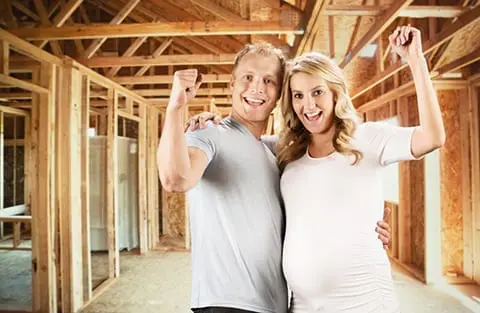
By Drew Knight
The market for first-time homebuyers is ever changing, as are the wants and needs in the homes they’re shopping for.
And the same goes for the economy. As the economy shifts, the buying process shifts as well, affecting the homes first-time homebuyers can afford and the locations where they can buy them.
TD Bank, a banking service based on the East Coast, recently hosted a study evaluating more than 1,000 Americans looking to purchase a first home within the next five years, what kind of homes they’re shopping for and the factors affecting their decisions to buy.
The findings? Millennials are a bit more conservative with their finances than some might believe, as nearly two-thirds of those surveyed said they are still saving up to purchase their home. The survey also found that 63 percent of Millennials are considering a purchase within the next two years.
Here are a few more highlights:
Millennials Know Their Priorities
The key preferences survey participants mentioned include:
Move-in-ready homes: 75 percent of those looking to purchase their first home are interested in move-in ready homes.
Suburban life: 43 percent are looking to purchase their first home in a suburban area, while only 20 percent are seeking out big city or metro areas.
Childcare: 57 percent of Millennial homebuyers indicated a close proximity to childcare was important.
Backyard or pool: 60 percent of respondents are most interested in their first home having a backyard or pool.
Going green: 48 percent are looking for smart home and energy-efficient technologies.
Mortgage Rates are Heavily Influential
Among all of those surveyed, 77 percent cited mortgage rates as the most important factor when purchasing a home.
The survey also found that 17 percent of first-time buyers have yet to set aside money for unexpected home costs, which sometimes appear during the mortgage process.
“The costs of running a household can be a shock to new homeowners,” says Scott Haymore, head of pricing and secondary markets at TD Bank. “Monthly expenses for utilities, homeowner’s association fees and cable and Internet can add up quickly. Factoring these in at the beginning of the mortgage process can help borrowers assess their overall budget and determine a realistic monthly mortgage payment.”
The Down Payment is a Major Hurdle
The down payment might even be more influential.
In fact, 74 percent of those surveyed listed the down payment as the most significant obstacle in achieving homeownership. At the same time, 65 percent of all consumers indicated that saving for a down payment is delaying their decision to buy a new home.
The survey found that more Americans (about 33 percent) are putting less than 20 percent down on a home and 37 percent of first-time buyers plan to take advantage of mortgage affordability programs.
“For many consumers, a 20 percent down payment is a major barrier to homeownership,” Haymore says. “It’s often difficult to save this much cash, especially for young adults saddled with substantial student loan debt. First-time buyers are shopping for low-down-payment mortgage programs, which allow buyers to put as little as 3 percent down.”

Charles Kemp
I think ti would be nice to ave some of these amenities on the home but sometimes you can’t get them in the first home that you buy. It is always nice when you don’t have to worry about that but it is helpful to have the home built the way you want it if you want these perks.
Admin
We agree! One of the best things about buying a newly built home is that you can work with your builder to discover what works for you. While you may not always be able to get everything you want, they’re always willing to meet you in the middle and design a home you’ll love.